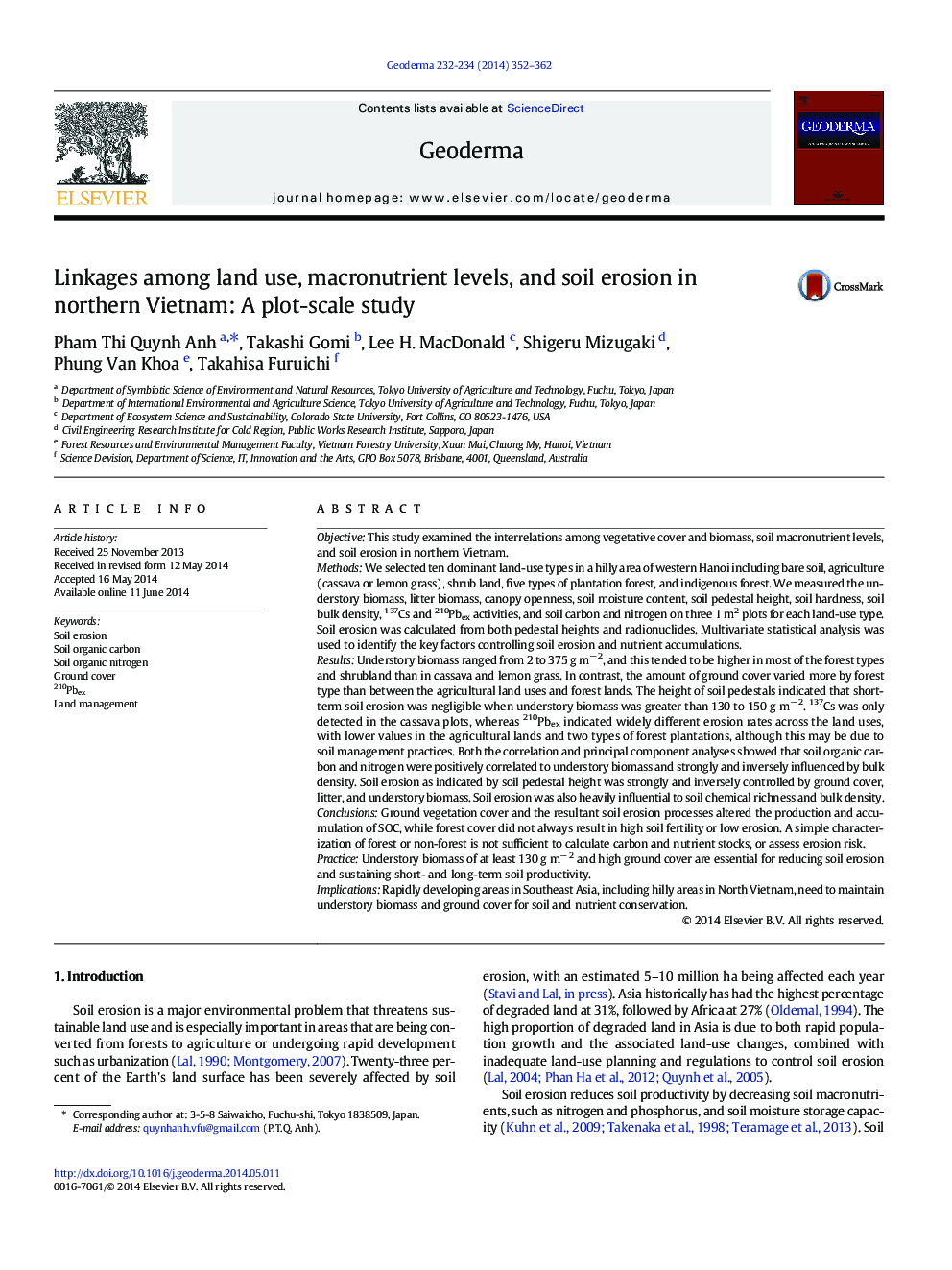| کد مقاله | کد نشریه | سال انتشار | مقاله انگلیسی | نسخه تمام متن |
|---|---|---|---|---|
| 6408744 | 1629469 | 2014 | 11 صفحه PDF | دانلود رایگان |
- Variability among forest types was comparable to the variability between land uses.
- Soil organic carbon and nitrogen increased with understory biomass.
- Surface cover was an important control on short- and long-term erosion rates.
- The interactions among vegetation, soil characteristics, and erosion are complex.
- Vegetation and soil erosion may feedback into both SOC production and accumulation.
ObjectiveThis study examined the interrelations among vegetative cover and biomass, soil macronutrient levels, and soil erosion in northern Vietnam.MethodsWe selected ten dominant land-use types in a hilly area of western Hanoi including bare soil, agriculture (cassava or lemon grass), shrub land, five types of plantation forest, and indigenous forest. We measured the understory biomass, litter biomass, canopy openness, soil moisture content, soil pedestal height, soil hardness, soil bulk density, 137Cs and 210Pbex activities, and soil carbon and nitrogen on three 1 m2 plots for each land-use type. Soil erosion was calculated from both pedestal heights and radionuclides. Multivariate statistical analysis was used to identify the key factors controlling soil erosion and nutrient accumulations.ResultsUnderstory biomass ranged from 2 to 375 g mâ 2, and this tended to be higher in most of the forest types and shrubland than in cassava and lemon grass. In contrast, the amount of ground cover varied more by forest type than between the agricultural land uses and forest lands. The height of soil pedestals indicated that short-term soil erosion was negligible when understory biomass was greater than 130 to 150 g mâ 2. 137Cs was only detected in the cassava plots, whereas 210Pbex indicated widely different erosion rates across the land uses, with lower values in the agricultural lands and two types of forest plantations, although this may be due to soil management practices. Both the correlation and principal component analyses showed that soil organic carbon and nitrogen were positively correlated to understory biomass and strongly and inversely influenced by bulk density. Soil erosion as indicated by soil pedestal height was strongly and inversely controlled by ground cover, litter, and understory biomass. Soil erosion was also heavily influential to soil chemical richness and bulk density.ConclusionsGround vegetation cover and the resultant soil erosion processes altered the production and accumulation of SOC, while forest cover did not always result in high soil fertility or low erosion. A simple characterization of forest or non-forest is not sufficient to calculate carbon and nutrient stocks, or assess erosion risk.PracticeUnderstory biomass of at least 130 g mâ 2 and high ground cover are essential for reducing soil erosion and sustaining short- and long-term soil productivity.ImplicationsRapidly developing areas in Southeast Asia, including hilly areas in North Vietnam, need to maintain understory biomass and ground cover for soil and nutrient conservation.
Journal: Geoderma - Volumes 232â234, November 2014, Pages 352-362
